Online Course
NRSG 780 - Health Promotion and Population Health
Module 2: Determinants of Health
Modifiable Lifestyle Risk Factors: Diet, Overweight, Obesity and Physical Inactivity
Other modifiable lifestyle risk factors for the leading cause of death are diet, overweight, obesity and physical inactivity. This subtopic will focus on each of these risk factors in relation to their trends and the risks associated with them.
Research on diet, overweight, obesity and physical inactivity and their relationship to the leading causes of death has been ongoing since the initiation of the Seven Countries Study in 1947(1). The Framingham Study first noted the relationship between the risks of physical inactivity and obesity to increase the risk of heart disease in 1967 (2,3).
- Keys, A. et al. (1980). Seven countries. A multivariate analysis of death and coronary heart disease. Cambridge, MA: Harvard University Press.
- Kannel, W.B. (1967). Habitual level of physical activity and risk of coronary heart disease: The Framingham Study. Canadian Medical Association Journal, 96(12), 811-812.
- Thomas, H.E.J., Kannel, W.B., & McNamara, P.M. (1967). Obesity: A hazard to health. Medical Times, 95, 1099-1106.
Influence of Diet on Cancer
When the influence of diet is studied in relation to cancer, approximately 40% of cancers are attributable to diet and alcohol.

The evidence now shows that many cancers are associated with low levels of fruit and vegetable consumption, including:
|
|
Behavioral Risk Factor Surveillance System data indicate that nearly 75% of Americans are consuming fewer than 5 fruits and vegetables a day.
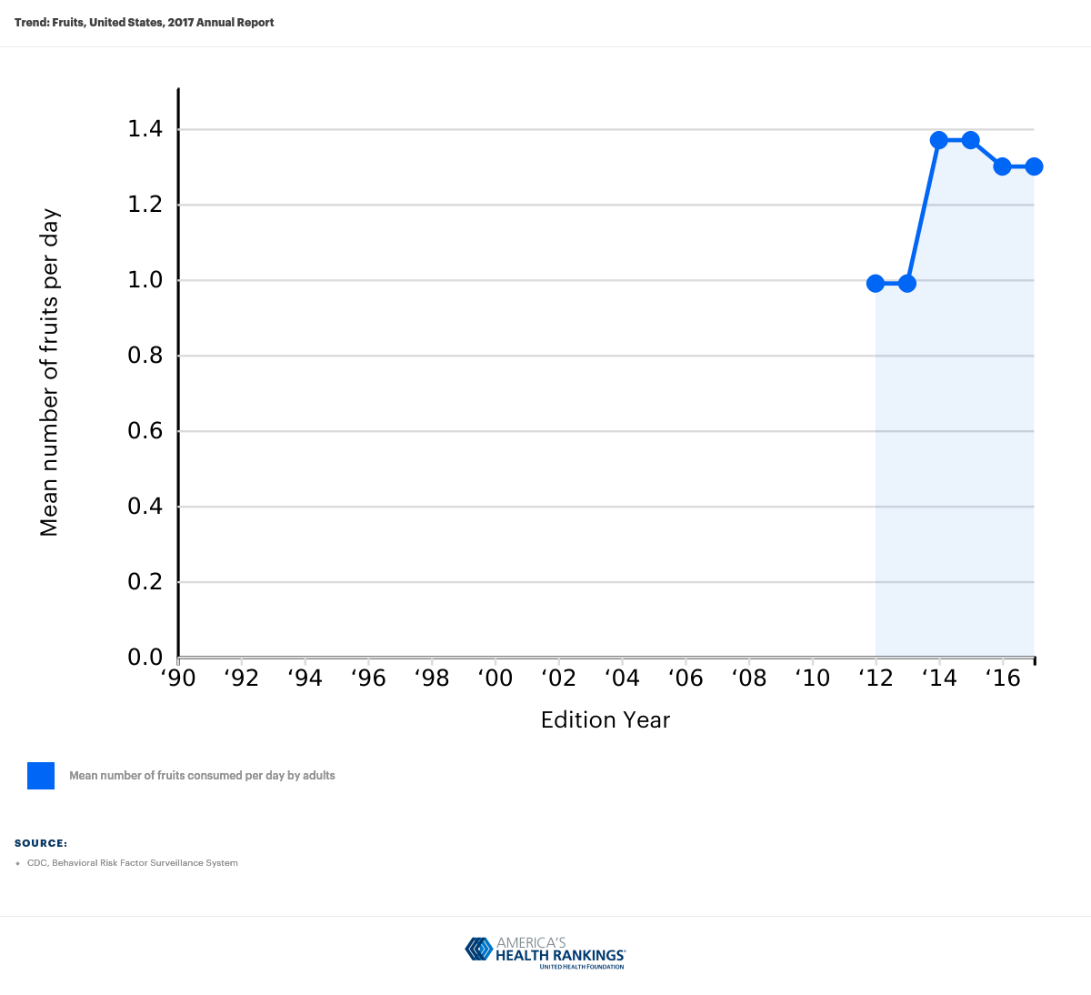 Source: BRFSS Trend Data 2017 https://www.americashealthrankings.org/explore/2017-annual-report/measure/Fruit/state/ALL
Source: BRFSS Trend Data 2017 https://www.americashealthrankings.org/explore/2017-annual-report/measure/Fruit/state/ALL
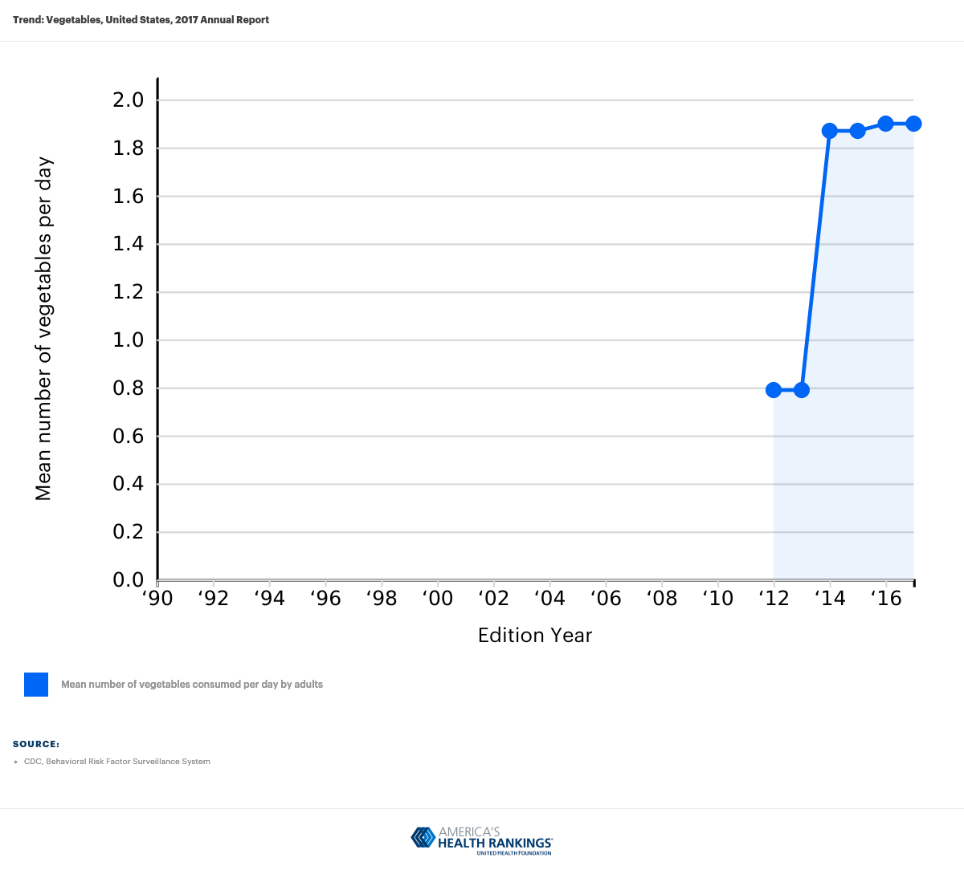 Source: BRFSS Trend Data 2017 https://www.americashealthrankings.org/explore/2017-annual-report/measure/Veggie/state/ALL
Source: BRFSS Trend Data 2017 https://www.americashealthrankings.org/explore/2017-annual-report/measure/Veggie/state/ALL
The most recent BRFSS data reveal that nearly 40% of the population consumes fruit less than one time per day and 20% of the population consumes vegetables less than one time per day.
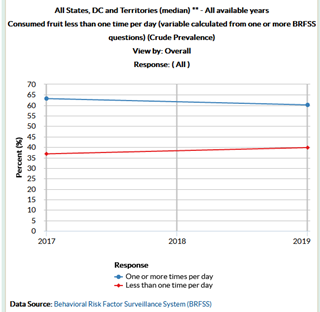
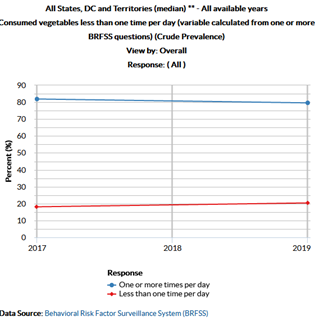
International studies show that the higher the average dietary fat consumption of the population, the higher the death rate from breast cancer. Notice how low the rates are in the Philippines, Thailand and Japan as compared to the Netherlands, New Zealand, Canada and the U.S. The same relationship is found between high dietary fat consumption and death rates from intestinal and prostate cancer.

Obesity and Overweight
Excess dietary fat, excess calories and sedentary lifestyles are major causes of the epidemic of obesity that we are facing in the U.S.
Risks of Obesity
Obesity and overweight increase the risk of a variety of health problems, including
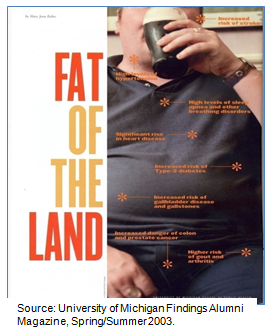
- type 2 diabetes
- gall bladder disease
- stroke
- asthma
- congestive heart failure
- high blood pressure
- elevated serum cholesterol
- sleep apnea and respiratory disorders
- coronary heart disease
- angina pectoris
- gout
- bladder control problems
- musculoskeletal disorders
- osteoarthritis
Watch this video developed by the CDC on the Obesity Epidemic.
Overweight and obesity increase the risk of poor female reproductive health– pregnancy complications, menstrual irregularities, irregular ovulation and infertility.
Overweight and obesity also increase the risk of a variety of cancers, including:
- breast
- prostrate
- liver
- colon and rectum
- uterus
- kidney
- pancreas
- esophagus
Trends in Overweight and Obesity

Data from the most recent NHANES shows that 31% of adults age 20 and over are overweight, 42% are obese and 9% are extremely obese and the prevalence is similar across all age groups.
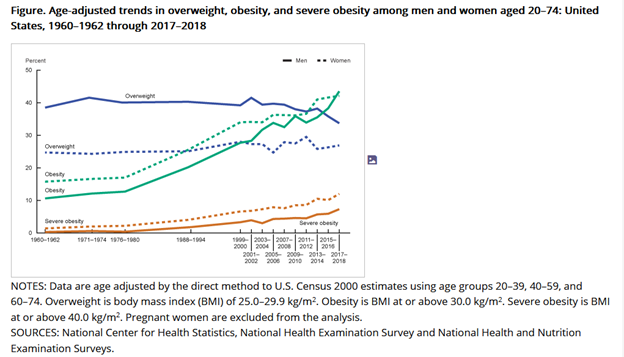
NIH recently found that extreme obesity may shorten life expectancy up to 14 years. For more information, please review https://www.nih.gov/news-events/news-releases/nih-study-finds-extreme-obesity-may-shorten-life-expectancy-14-years.
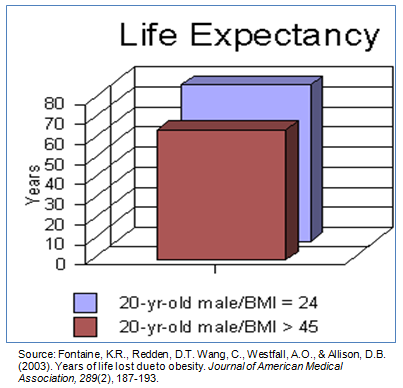
The Congressional Budget Office indicates that rising obesity rates significantly effects health care spending.

 Behavioral Risk Factor Surveillance System data indicate that the percentage of the population that is neither overweight nor obese is dramatically declining. CDC has used the BRFSS data to map the changes in obesity prevalence since 1985.
Behavioral Risk Factor Surveillance System data indicate that the percentage of the population that is neither overweight nor obese is dramatically declining. CDC has used the BRFSS data to map the changes in obesity prevalence since 1985.
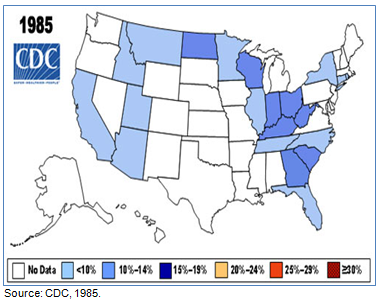
Five years later, at least 10% of the population of the majority of states were obese. By 1999 20% were obese. Now obesity rates are greater than 30% for nearly half of the U.S.
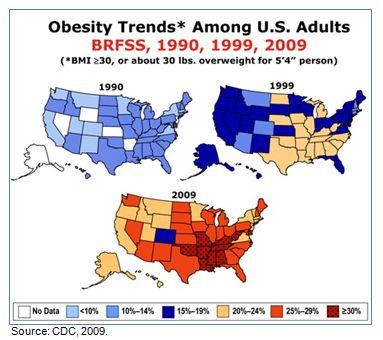
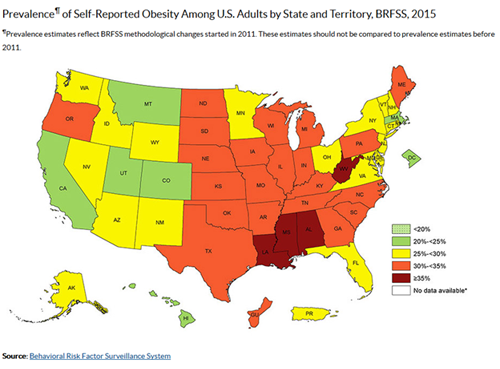
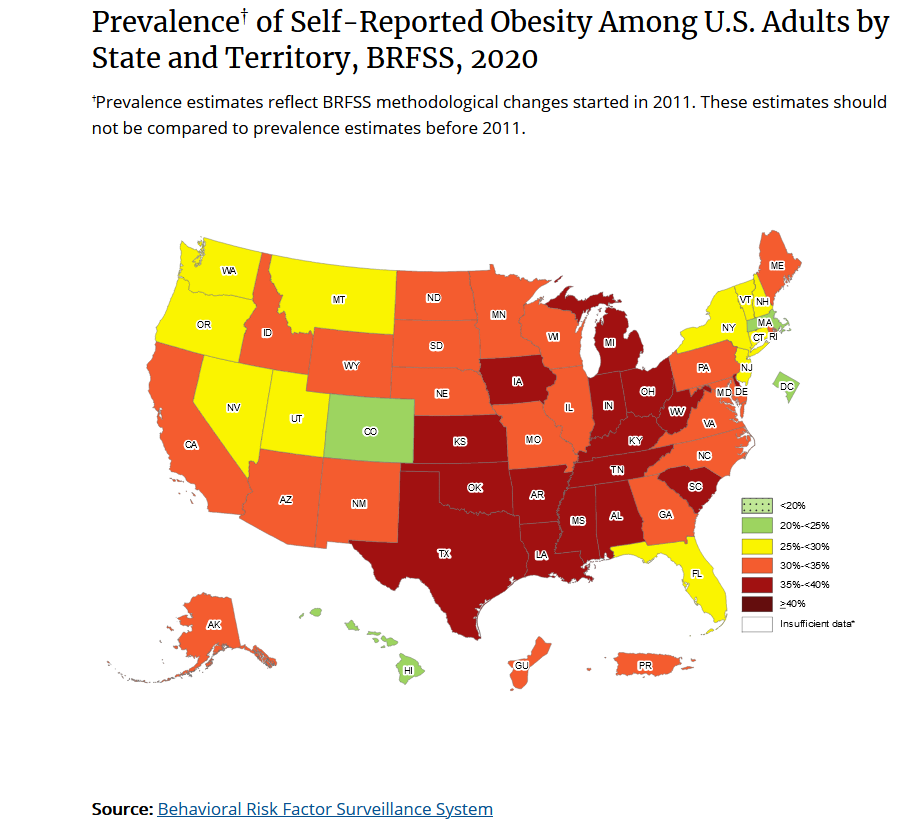
Physical Inactivity
Another key to epidemic of obesity is sedentary lifestyle. Numerous studies have shown the importance of regular physical activity for reducing the risk of chronic disease. Morris’ work in England on the drivers and conductors of the double-decker busses in the 1960s is a classic. Drivers and conductors were studied over a ten year period. Both groups were virtually identical in terms of socioeconomic status, educational level and environmental exposures. The single difference was that the drivers were sedentary throughout the day and the conductors ran up and down the bust stairs during the day collecting tickets. Because the bus company supplied the uniforms, accurate records were available on the waist sizes of the men throughout the years.

Sudden death from ischemic heart disease showed distinct differences between the two groups – the rate for drivers was substantially higher.

Average waist sizes between the two groups varied significantly over time, with drivers gaining weight at a much higher rater than the conductors as they aged.
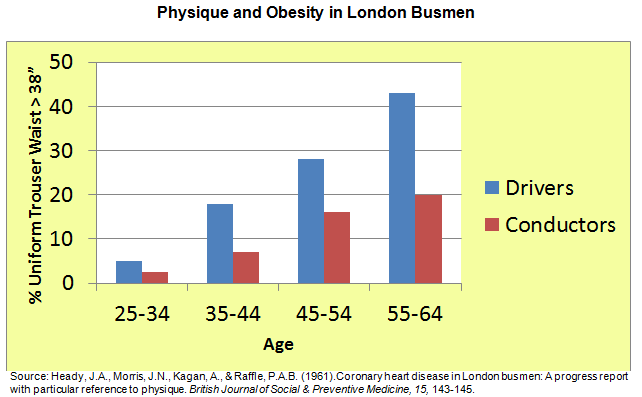
CHD rates in the busmen between the ages of 35 and 64 varied significantly with drivers’ raters far exceeding the conductors.

 Data from 2023 indicate that only 30.4% of the population participated in enough aerobic and muscle strengthening exercises to meet guidelines as noted in the map below..
Data from 2023 indicate that only 30.4% of the population participated in enough aerobic and muscle strengthening exercises to meet guidelines as noted in the map below..
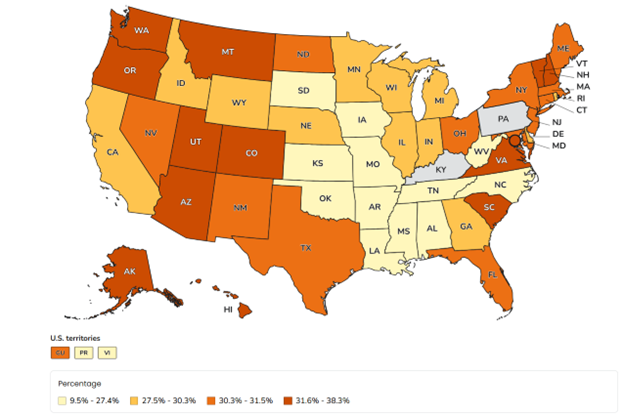
This website is maintained by the University of Maryland School of Nursing (UMSON) Office of Learning Technologies. The UMSON logo and all other contents of this website are the sole property of UMSON and may not be used for any purpose without prior written consent. Links to other websites do not constitute or imply an endorsement of those sites, their content, or their products and services. Please send comments, corrections, and link improvements to nrsonline@umaryland.edu.